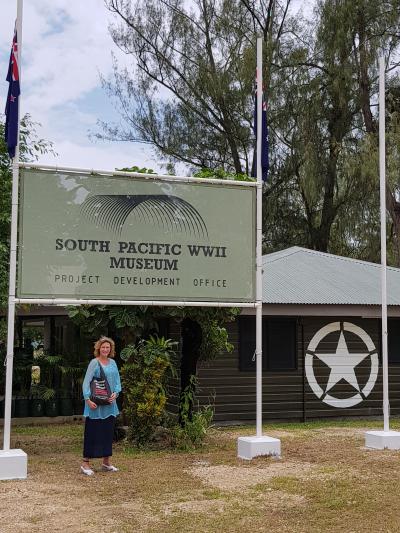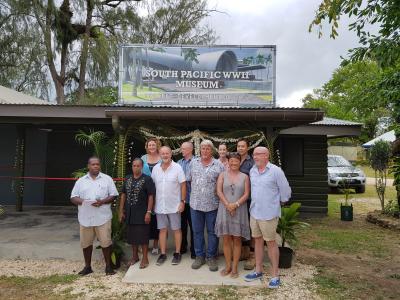28.05.2018 - By Heather Ware in Vanuatu
It is strange how things happen. Our children left home, my husband’s work is in Auckland every week, and Scoota, my daily walking buddy, curled up his toes and departed. Just a few signals that life was moving on.
Beginner’s salsa with people half my age, and talking into a computer for online French and Chinese were good attempts at new things – but weren’t ticking the box for ‘meaningful’. Then this VSA assignment came along. The chance to get immersed in a project, in another country, and apply years (oh so many years) of work and life experience to something that matters.
Here in Luganville, helping to realise a world-unique South Pacific WWII Museum does matter. There’s little indoor activity here. No movie theatres. Colourful yet simple day-time mamas’ markets. A few restaurants. But quiet. Tourists say they expect more. The cruise ships need a reason to port here. Independent travellers want to hear a well-told story. And they all like air conditioning in 30 degrees.

The new Project Office. Flags of Vanuatu, New Zealand, Australia and America fly every day. Photo: Heather Ware
The museum plans include a theatre, digital connections, to be built sustainably and run on solar energy. It’ll become a community hub. A catalyst for new businesses, and a chance to upskill youth in tourism and ICT.
So why build it here? Luganville didn’t exist until the Americans came. They arrived unannounced into Espiritu Santo. The deep and protected harbour with flat land ideal for the largest supply base for the South Pacific during WWII. Coconut plantations were cleared and within 16 days an airstrip was operational. Pekeo International Airport today is one of the three built then. The main street is “four tanks wide”; new hospitals were built. Local women were moved away.
It already has a cult reputation. Today’s divers rank the wreck that was the SS President Coolidge a “top 10 dive” in the world. Grounded on the coral reef by the Captain to save the 5000+ troops when it mistakenly hit their own mines. Miraculously just two died, one in the blast, the other, Elwood J Euart, 26 years old, heroically saving others who were trapped.

Children from Luganville International School about to drop flowers into sea to commemorate Elwood J Euart. Note divers coming back in from their dive in the background. Photo: Heather Ware
Espiritu Santo was relieved never to lose people to enemy fire, but thousands of allied forces went on from here to fight other battles, never to return.
The museum will remember them. And it seems already that lots of people want to hear their stories and those of the locals at that time too.

Official opening of the Project Office. I work with Alma (Manager) and Marina (Assistant), on the left.
